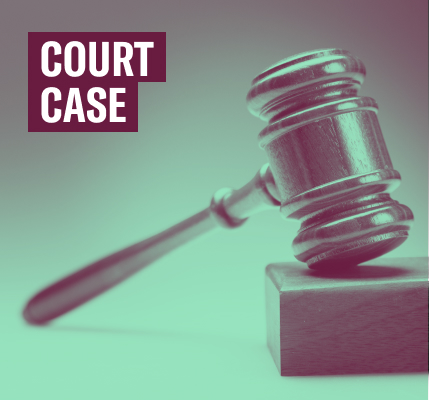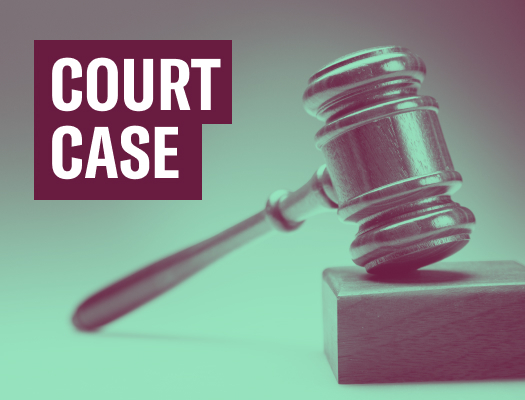November 17, 1980: In Stone v. Graham -a lawsuit brought by the ACLU of Kentucky-the Supreme Court rules that ""posting the Ten Commandments on classroom walls is plainly religious in nature. The Ten Commandments are undeniably a sacred text in the Jewish and Christian faiths, and no legislative recitation of a supposed secular purpose can blind us to that fact.""
November 18, 1999: The ACLU of Kentucky files three lawsuits challenging the posting of the Ten Commandments in the Harlan County public schools and in the McCreary and Pulaski County courthouses.
November 24, 1999: Following pressure from parents and a lawsuit filed by the ACLU of Southern California, the Val Verde Unified School District drops plans to post copies of the Ten Commandments on the walls of school offices.
May 5, 2000: A federal judge rules in ACLU v. McCreary County that Ten Commandments displays in Kentucky public schools and courthouses are unconstitutional. Several months later, after filing and dismissing an appeal, the counties erected new displays in which the Ten Commandments are surrounded by American political and patriotic texts.
July 10, 2000: The ACLU of Kentucky files a federal lawsuit on behalf of four members of the clergy from diverse religious communities seeking to halt plans to place a Ten Commandments monument on Capitol grounds.
July 25, 2000: A federal judge prohibits the state of Kentucky from erecting a monument to the Ten Commandments on the Capitol grounds, saying it would amount to government endorsement of religion.
October 12, 2000: The ACLU of Montana and Custer County officials settle a lawsuit, in which the officials agree to move a Ten Commandments monument from its prominent place in front of a courthouse.
March 6, 2001: After a two-day trial, a federal judge rules that a Ten Commandments plaque on a Pennsylvania county courthouse violates the principles of religious freedom. The case, Freethought Society of Greater Philadelphia v. County of Chester , was brought by the ACLU of Pennsylvania. The county appealed.
March 12, 2001: The ACLU of Ohio files a federal lawsuit saying that a Ten Commandments display in a local county courthouse violates the First Amendment.
March 15, 2001: The Board of Supervisors in Johnson County, Iowa unanimously vote to honor a request by the Iowa Civil Liberties Union to remove a Ten Commandments monument from the courthouse lawn.
June 22, 2001: Once again, a federal judge rules in ACLU v. McCreary that Ten Commandments displays in Kentucky public schools and courthouses are unconstitutional.
November 7, 2001: The ACLU of Kentucky files challenges to postings of Ten Commandments displays in four county courthouses (Garrard, Grayson, Mercer, and Rowan).
January 29, 2002: Acting on behalf of a coalition of clergy and concerned residents, the ACLU of Tennessee files a lawsuit challenging the posting of the Ten Commandments in public buildings in Hamilton County.
February 19, 2002: Following an ACLU of Nebraska lawsuit, a federal court orders Plattsmouth officials to remove a Ten Commandments monument placed in a city-owned park.
February 25, 2002: The Supreme Court denies Indiana's request to review a federal appeals court ruling in O'Bannon v. Indiana Civil Liberties Union , which found that the governor's planned placement of a Ten Commandments monument on the lawn of the Indiana Statehouse was unconstitutional. This marks the second time in less than a year that the Court has refused to review a ban on the placement of Ten Commandments monuments on government property.
October 9, 2002: A federal appeals court rules in favor of the ACLU of Kentucky and a coalition of religious leaders and citizens in finding that a state plan to erect a Ten Commandments monument on the Capitol grounds ""impermissibly endorses religion."" The 2-1 decision by a panel of the U.S. Court of Appeals for the Sixth Circuit affirms an earlier federal court decision. The court also found that state legislation requiring the monument to be erected is unconstitutional.
November 18, 2002: A federal district judge orders Alabama Chief Justice Roy Moore to remove a monument to the Ten Commandments displayed on the grounds of the state judicial building. The ACLU and other groups filed two separate lawsuits challenging the display ( Glassroth v. Moore and Maddox et al. v. Moore ).
November 3, 2003: The United States Supreme Court denies an appeal from Alabama Chief Justice Roy Moore.
November 13, 2003: Alabama's judicial ethics panel unanimously votes to remove Chief Justice Roy Moore from office for defying a federal judge's order to move a Ten Commandments monument from the state Supreme Court building.
December 18, 2003: Ruling in favor of the ACLU of Kentucky, a federal appeals court rules in ACLU v. McCreary County that Ten Commandments postings in three Kentucky counties manifest a religious purpose and are, therefore, unconstitutional.
February 18, 2004: A federal appeals court affirms a lower court ruling that the city of Plattsmouth ""abandoned its duty to religious neutrality and acted with the intent of promoting a particular point of view in religious matters,"" by erecting a Ten Commandments monument in a city-owned park.
October 12, 2004: The Supreme Court announces that it will take up the constitutionality of Ten Commandments displays on government land and buildings in two separate cases, ACLU v. McCreary County and Van Order v. Perry .

